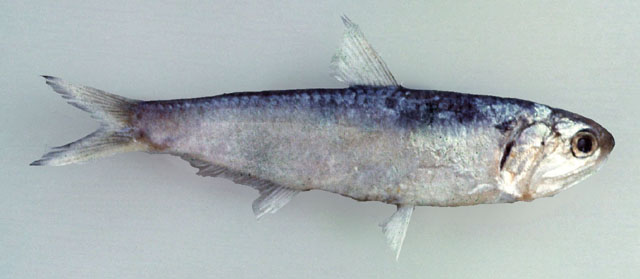| Engraulidae (Anchovies), subfamily: Coiliinae |
| 10.7 cm SL (male/unsexed) |
|
pelagic-neritic; freshwater; brackish; marine; depth range 0 - 50 m |
| Indo-Pacific: Indian Ocean (Sri Lanka and India) and western Pacific (Java, Sulawesi, Timor, Ambon, the Philippines and northern Queensland). Presumably more widespread in the Indian Ocean, but not previously separated from Thryssa baelama. |
|
Dorsal spines (total): 0-0; Anal spines: 0-0; Anal soft rays: 24-28. Almost identical to T. baelama except in the following: 1 or 2 keeled scutes without arms immediately behind the isthmus, first and second supra-maxilla relatively longer, tip of maxilla blunter and perhaps not always reaching to front border of pre-operculum; also, fewer branched anal fin rays and fewer ;re-caudal but more caudal vertebrae (Ref. 189). |
| Its habitat and biology is probably similar to T. baelama, but not separated from it in previous records. |
|
Data deficient (DD); Date assessed: 28 February 2017 Ref. (130435)
|
| harmless |
Source and more info: www.fishbase.org. For personal, classroom, and other internal use only. Not for publication.

